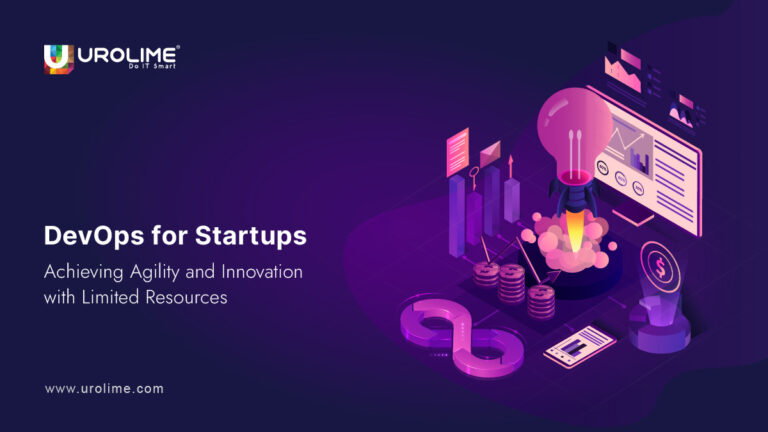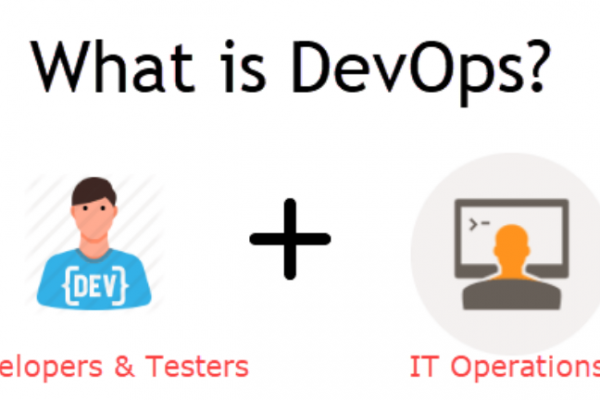Building a Minimum Viable Product (MVP) with DevOps
The fundamental idea behind the minimum viable product (MVP) is to gain the most knowledge and insight into customer preferences and needs regarding a product. The development is a continuous process which is incremental in nature and DevOps contribute to the journey through
Continuous frequent updates & Scalability
Continuous integration and continuous delivery (CI/CD) tools ensure that the application or MVP can be easily updated according to dynamically changing scenarios.
DevOps allows applications to quickly ramp up their server capacity in a flash on demand- when the MVP is evolving upscaling is possible from the same server set up.
Microservices
In microservice architecture, since the application is broken down to independent services, the update, maintenance and bug-fixing process is simplified and easy to manage. For MVP, this translates into easier and more efficient enhancement of features.
Automation
Extensive automation or zero touch automation is deemed to be the future of DevOps. Through an effective automated DevOps Consulting Service, development and deployment pace can be drastically increased which would make a market impact more than anticipated.
Strategies for Optimizing Cloud Costs for Startups
Optimizing cloud costs is crucial for startups to ensure efficient resource utilization and financial sustainability. Here are some strategies to help startups optimize their cloud costs:
Rightsize Resources & Storage Optimization:
Assessing resource requirements to resize instances, storage, and other resources based on actual usage by utilizing cloud provider tools and third-party solutions to identify underused or oversized resources.
Reserved Instances & Savings Plans:
Leverage reserved instances or savings plans offered by cloud providers to commit to a certain amount of usage in exchange for significant cost savings.
Spot Instances:
Spot instances can be used for non-critical and fault-tolerant workloads to take advantage of significantly lower prices compared to on-demand instances.
Auto Scaling:
In-order to dynamically adjust the number of instances based on demand and to ensure that the right number of resources are available during peak times and can scale down during periods of low demand without affecting the application performance.
Monitoring and Alerts:
Receive notifications when resource usage or costs exceed predefined limits, allowing companies to take prompt action through setting up monitoring and alerting for key performance metrics and cost thresholds.
Automating Infrastructure Provisioning and Configuration Management
Automating infrastructure provisioning and configuration management is essential for achieving agility, scalability, and consistency in modern IT environments. Initiatives for automating infrastructure typically begin with server provisioning and configuration management. This supports technical professionals in automating the entire server life cycle, facilitating DevOps practices, and constructing infrastructure through code.
There are various tools and practices available for automating these tasks. Terraform (Open source IaC tool) or AWS CloudFormation can be used for infrastructure provisioning whereas Ansible, Chef, Puppet and SaltStack are tools that can be used for configuration management.
Implementing CI/CD Pipelines for Continuous Delivery
Continuous Integration/Continuous Deployment (CI/CD) pipelines is crucial for achieving continuous delivery in software development as it helps to automate the process of building, testing, and deploying code by reducing errors and speeding up the release cycle.
A version control system such as Git is created, and the code repository is hosted on platforms like GitHub, GitLab, or Bitbucket. For setting up CI Pipeline, the following steps need to be addressed.
- Source Code Checkout: Configure the CI pipeline to clone the code repository.
- Build Stage: Compile and build the application using build tools like Maven, Gradle, or npm.
- Unit Testing: Run unit tests to ensure code quality and identify issues early.
- Static Code Analysis: Use tools like SonarQube to analyze code for quality and security issues.
- Artifact Generation: Create deployable artifacts (e.g., JAR, WAR, Docker images) after a successful build.
Inorder to set up CD Pipeline, some processes has to be followed,
- Defining artifact repository to store build artifacts.
- Environment provisioning and configuration management: Using infrastructure as code tools or cloud specific solutions, the environment can be provisioned or defined. It can be configured using tools like Ansible, Puppet or Chef.
- Integration Testing & Deployment: After successfully performing integration and performance testing in the staging environment, the application can be deployed to the target environment.
- Monitoring and rollback: Based on the execution of smoke tests to ensure basic functionality post-deployment, monitoring should be implemented to detect issues in production and in case if failures are identified, automatic rollback mechanisms should be available.
Pipeline Orchestration:
Pipeline orchestration is the coordination and management of various tasks and processes within CI/CD pipeline which involves the automation of workflows, ensuring that each stage of the pipeline is executed in a well-defined sequence. The goal is to streamline the software delivery process, reduce manual interventions, and enable efficient collaboration among development, testing, and deployment teams.
CI/CD pipelines can be defined as code using any declarative language, and the triggers can be configured based on events- code push and pull requests, to initiate the CI/CD run.
Continuous Improvement:
By collecting feedback from monitoring, testing, and deployment processes (which is called the feedback loop) the pipeline can be improved continuously. Automating the post deployment activities and reviewing the pipeline regularly can enhance security and efficiency.
Leveraging Open-source Tools for DevOps in Startups
Version Control:
For source code management and collaboration, Git a distributed version control system can be used.
Continuous Integration/Continuous Deployment (CI/CD):
For automating the entire software delivery process with a vast number of plugins Jenkins can be effective. GitLab CI/CD provides CI/CD capabilities, code repository, and collaboration features in a single platform. Easy setup for automating builds and tests on every GitHub push can be achieved through Travis CI and CircleCI automates software development processes with easy configurations. Multi-cloud deployments, canary releases, and automated rollbacks can be managed through Spinnaker.
Configuration Management:
Ansible is an effective tool for automating server provisioning and configuration tasks whereas Chef can be used to define infrastructure configurations using Chef recipes. IaC management can be done through Puppet which automates server configuration and management.
Containerization and Orchestration:
Docker is a tool which simplifies application packaging and deployment and Kubernetes orchestrates and manages containerized applications.
Infrastructure as Code (IaC):
Terraform defines and provision infrastructure across various cloud providers and Packer creates consistent and reproducible machine images for deployment.
Monitoring and Logging:
Tools like Prometheus, Grafna and ELK stack can be used to collect, visualize, log, monitor and alert based on the captured data.
Collaboration and Communication:
Slack can facilitate communication and collaboration among team members.
Security:
Sensitive information can be securely stored and the access to that information can be managed through HashiCorp Vault or Clair.
Continuous Learning and Documentation:
Jupyter Notebooks or confluence can be used for creating and sharing documents containing live code, equations, visualizations, and narrative text.
Conclusion
Through effectively practicing DevOps and by following its principles, startups can achieve agility and foster innovation even with limited resources at different stages of product development – coding, testing, and release management which would accelerate the market launch process. Strategies for optimizing cloud costs and automating infrastructure provisioning and configuration management streamlines operations, are crucial and enables startups to scale, adapt and deliver rapidly.
![]()






